| Newsletter for Collectors - Vol 9.3 | May 12, 2015 | | | Home • What‘s New • Photographers • Online Exhibitions
Contents • Alphabetical • Styles and movements • Articles
Visual Indexes • Galleries & Dealers • Timelines • Techniques
Library • Contact us Welcome to another Luminous-Lint Newsletter.
Online exhibitions for everybody to enjoy
Additional online exhibitions for subscribers
(You will need to be logged in to see these.)
To understand photography between the First and Second World Wars requires familiarity with movies shown at the same time. By extracting single frames we can compare them to photographs from the same period to seek out stylistic trends. The close-up of an eye in Sergei Eisenstein‘s Strike (1925) is similar to later photographs by Bill Brandt, the off-kilter views of buildings in The Man with a Movie Camera (1929) are similar to Alexander Rodchenko‘s Modernist photography, a child hanging on to the edge of a building to maintain his position watching Adolf Hitler pass by reminds one of the New York street photography of children by Helen Levitt. The comparative analysis of movies with still photography during the inter-war period requires deeper analysis.
Additional online exhibitions related to Experimental and Manipulated Photography.
To get the best out of this newsletter Subscribers to Luminous-Lint should login to the website so you can link directly to the Themes and Online Exhibitions. On the Home Page of Luminous-lint you can see the Themes that are currently being improved.
Enjoy...
For details - Subscriptions
Most websites, blogs and social media are wonderful at providing static information that is time dependent - for example a museum puts up the details on their latest exhibition or a blog discusses a significant photographer. These can be articles full of fascinating information but they are static and as soon as they are completed the writer moves on to the next topic as priorities have changed. Wikipedia uses a different approach where each element can be modified, and hopefully improved, by anybody at any time. Luminous-Lint is under continual review and the Online Exhibitions are a part of this. If we look at the three online exhibitions deals with films of the 1920s and 30s the first purpose is to bring together the stills as a resource but after that they are integrated into different themes such as German Modernism, Abstraction of the Real and Avant-garde where they are compared with still photographs from the same period. Each piece of information on Luminous-Lint is footnoted and built into an ever-improving framework with a finer and finer mesh.
If you have suggestions for future exhibitions or you would like to collaborate on a specific Theme then let me know as I am always interested.
All the best, Alan
Samuel Bourne
Samuel Bourne (1834-1912) was born in Shropshire, England. As a young man he became a keen amateur photographer exhibiting work at the Nottingham Photographic Society Exhibition in 1858. He arrived in India in January of 1863 at which point he undertook the arduous journey from Madras to Simla and the foothills of the Himalayas.
In Simla he met up with William Howard, who was a professional photographer in Simla and became a partner in the photographic business that Howard had already established. Shortly after, they were joined by Charles Shepherd and the partnership of Bourne and Shepherd was begun. Howard left the company in 1866.
Bourne‘s photographic journeys of 1863 into the Himalayas, 1864 to Kashmir and his second trip to the Himalayas in 1865/66 form what is considered his finest body of work. The dramatic photographs of these remote and almost inaccessible regions help make his name as a true artist and the premier photographer of the Indian sub-continent.
In the short space of seven years he produced in excess of 2,200 superb images of the landscape and architecture of the country. We are indeed fortunate that the quality of his prints was such that many fine examples of his work have survived. The popularity of Indian photography owes a lot to the wonderful images that Samuel Bourne produced.
Bourne left India November 1870, never to return. | 
LL/39947 | 
LL/39946 | 
LL/39944 |
Frederick Gutekunst: Scenery on the Pennsylvania Rail-Road (ca 1875)
Album of photographs documenting the Philadelphia, Middle, and Pittsburgh divisions of the Pennsylvania Railroad, incorporated in 1846. The consolidated company sought to build a trunk route from Philadelphia to Pittsburgh through the Allegheny mountains in order to compete with the Erie Canal for freight traffic. In 1854, rail passage through the Alleghenies via the "Horse Shoe Curve" was achieved and spurred the establishment and growth of the several towns depicted along the route.
Gutekunst, a prominent Philadelphia photographer, published a series of Pennsylvania Railroad views stereographs in 1875.
With thanks to The Library Company of Philadelphia, 1314 Locust St, Philadelphia, PA 19107, United States, www.librarycompany.org. With the assistance of Sarah Weatherwax, Curator of Prints and Photographs and Nicole Joniec, Digital Collections Manager. | 
LL/59604 | 
LL/59623 | 
LL/59608 |
History of the Miniature Case
In 2006 Paul Berg, author of author of "Nineteenth Century Photographic Cases and Wall Frames" provided this remarkable exhibition and I feel that it is time to share it again. For those interested in daguerreotypes and ambrotypes cases are an integral part of the beauty of the whole object. | 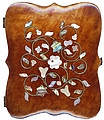
LL/11949 | 
LL/11921 | 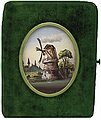
LL/11916 |
Strike (dir, Sergei Eisenstein, 1925)
[For Subscribers] The Soviet Russian film Strike (1925) directed by Sergei Eisenstein (1898-1948) was his first full length film and came out the same year as his The Battleship Potemkin. Along with October: Ten Days That Shook the World (1927) these classics of the director‘s early career are propaganda with a story. The protagonists are the workers and the people struggling against an oppressive state of Tzarist police, corrupt capitalists and morally bankrupt bureaucrats. Within Strike there are many examples of visual experimentation including montage, diverse camera viewpoints and silhouettes and these show many parallels with still photography of the 1920s. | 
LL/57844 | 
LL/57861 | 
LL/57875 |
The Man with the Movie Camera (dir, Dziga Vertov, 1929)
[For Subscribers] The Man with a Movie Camera directed by Dziga Vertov (1929) stands as one of the greatest experimental films ever made. Essentially the film is a fast-paced day in the life of a city in an age of modernisation. The movie camera itself is a participant in the film and at one point it even moves on its own. Cameramen stroll streets, climb a chimney, travel in a cable-hung box over a raging torrent, nothing is too much for the intrepid camera. The camera is the knowing eye that documents and spies on the city - Vertov felt that commercial cinema was a corrupting influence and he wanted "Life as it is" and "Life caught unawares" rather than carefully staged drama. The editing of the film was masterful and he used moving cameras, different viewpoints, overlaid images, montages and optical effects to capture the semi-chaos of a city. | 
LL/58331 | 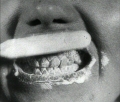
LL/58344 | 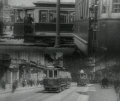
LL/58353 |
Triumph of the Will (dir, Leni Riefenstahl, 1935)
[For Subscribers] Leni Riefenstahl was a "fellow traveller" of the Nazi leadership but in the denazification trials that followed the Second World War she was never convicted. Later in life she won over 50 libel cases against people who stated that she collaborated with the Nazis. The documentary films she made, most notably Triumph of the Will (1935) and Olympia (1938), are generally regarded as two of the finest documentary films ever made. There are film frames that can be taken from Triumph of the Will that are almost indistinguishable from the New York street photographs of children by Helen Levitt. There are also troops viewed from above that are similar to photographs by Fritz Henle and Alexander Rodchenko. | 
LL/59058 | 
LL/59064 | 
LL/59067 |
Man Ray: Rayograms
[For Subscribers] Man Ray, one of the proponents of photograms, recognized their artistic potential. Taking whatever objects came to hand; my hotel-room key, a handkerchief, some pencils, a brush, a candle, a piece of twine - it wasn't necessary to put them in the liquid but on the dry paper first, exposing it to the light for a few seconds as with the negatives - I made a few more prints, excitedly, enjoying myself immensely. In the morning examined the results, pinning a couple of the Rayographs - as I decided to call them - on the wall. Man Ray, 1988, Self Portrait, (Bullfinch Press), p. 106 | 
LL/56117 | 
LL/50903 | 
LL/7381 |
Photographic Amusements
[For Subscribers] A visual exploration of Walter E. Woodbury"s book Photographic Amusements: including a description of a number of novel effects obtainable with the camera (New York: The Photographic Times Publishing Association, 1905). The exhibition includes book illustrations along with examples of photographs taken using the techniques described. | 
LL/37580 | 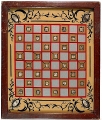
LL/32274 | 
LL/39020 |
Different versions of photographs
[For Subscribers] Viewing different versions of photographs can be instructive. In this exhibition we can clearly see how negatives and positives differ, how retouching, toning and hand-painting has been used to enhance, or at times ruin, a photograph. Contemporary interest in colorizing iconic photographs from the past is also included. | 
LL/38712 | 
LL/46313 | 
LL/43568 |
|
|
Frank Brangwyn (1867, 12 May - 1956, 11 June) was born - Belgium, Bruges. American artist.
Adam Bujak (1942, 12 May - ) was born - Poland, Krakow.
Leslie Gill (1908, 12 May - 1958) was born - US, RI, Cumberland. Married to photographer Frances McLaughlin-Gill.
Wellington Lee (1918, 12 May - 2001, 31 May) was born - China, Kwantung.
Benjamin Brecknell Turner (1815, 12 May - 1894, 29 April) was born - Great Britain, London. A painter-turned-photographer who photographed in the tradition of the English watercolour artists, much of his work being reminiscent of Constable‘s paintings. He had worked with Talbot in the 1840s and was an excellent practitioner of the More...
Huntington Witherill (1949, 12 May - ) was born - US, NY, Syracuse. Born in Syracuse, NY, in 1949, Huntington Witherill moved with his family to Santa Monica, California, in 1953, where he began to develop an interest in music. At the age of four, he began taking piano lessons and continued to do so through his More...
Lynne Cohen (1944, 3 July - 2014, 12 May) died - Canada, Montreal. Eerie photographs of empty rooms and buildings.
Sheldon Dick (1906 - 1950, 12 May) died - US, CT, Westport, Greens Farm. FSA photographer, filmmaler and literary agent.
Peter Henry Emerson (1856, 13 May - 1936, 12 May) died - Great Britain, Cornwall, Falmouth. Naturalistic photographer. Often worked with the less well known Thomas Frederick Goodall (1856-1944). Influential in his lectures and writings on Naturalistic Photography, the belief that photography could express artistic and impressionistic More...
Joseph James Forrester (1809, 27 May - 1861, 12 May) died - Portugal, São João da Pesqueira, Cachão da Valeira. Early photographer in Portugal.
Nicola Perscheid (1864, 3 December - 1930, 12 May) died. Work was included in Die Kunst in der Photographie.
Robert Rauschenberg (1925, 22 October - 2008, 12 May) died - US, FL, Captiva Island. American artist and photographer.
F.E. Williams (1893, 9 February - 1943, 12 May) died - Papua, Owen Stanley Range. Australian-born ethnographer who trained at the University of Adelaide (B.A. 1914) and Balliol College,Oxford, (1921) and spent his entire working career as Government Anthropologist in the Australian Territory of Papua. |
| |
|

